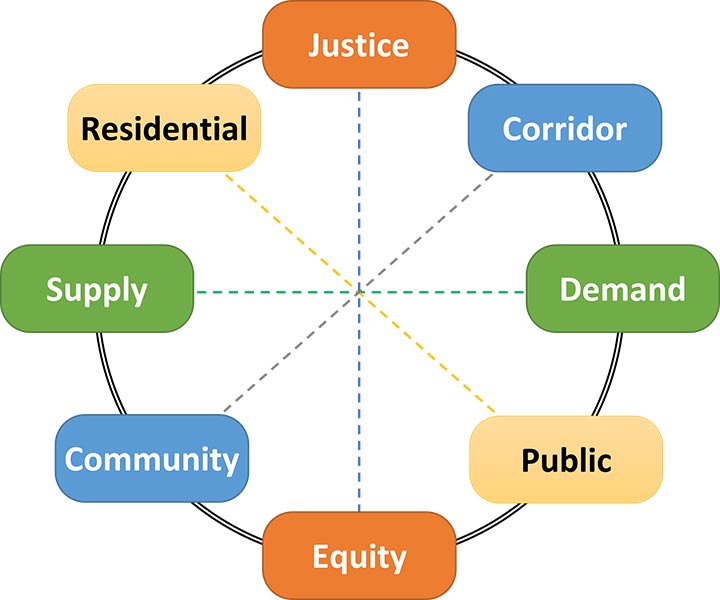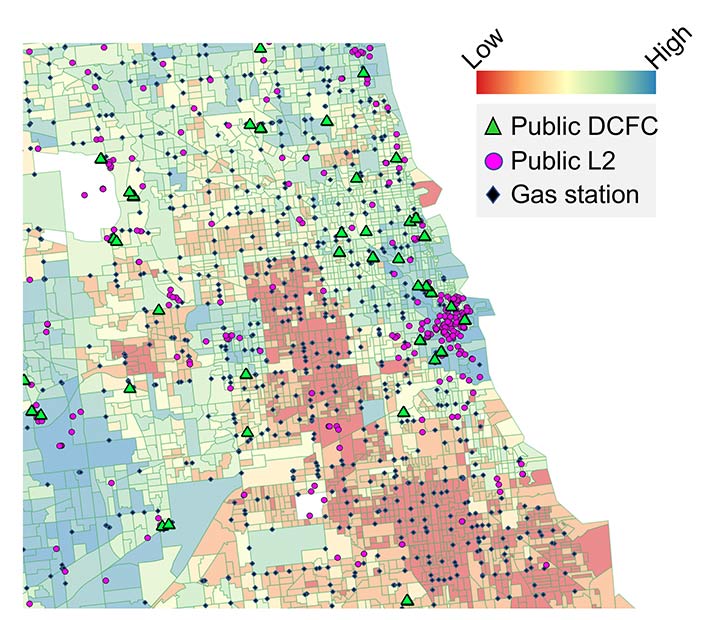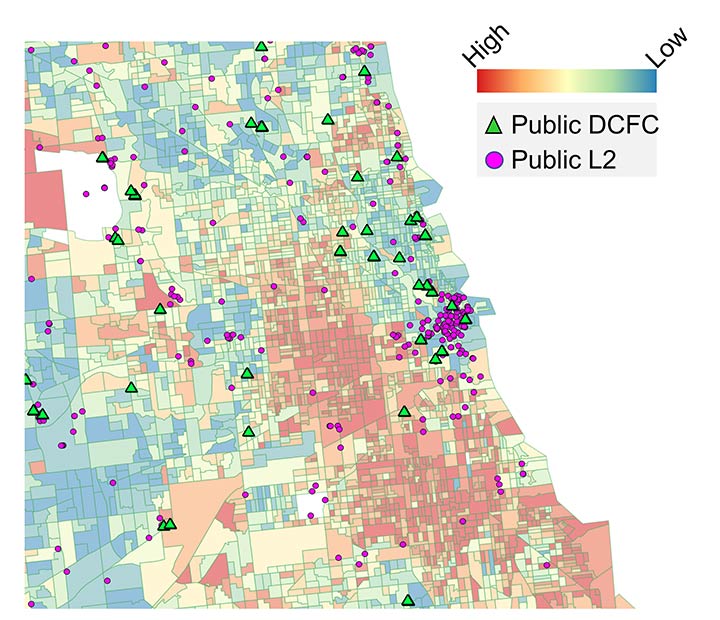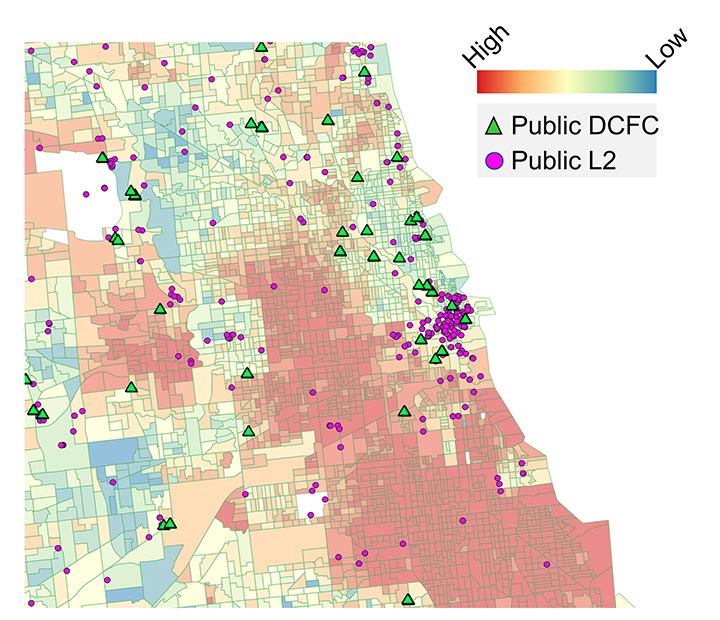EVI-Equity: Electric Vehicle Infrastructure for Equity Model
NREL's Electric Vehicle Infrastructure for Equity (EVI-Equity) model evaluates the environmental justice, energy justice, and energy equity of the nationwide electric vehicle (EV) charging infrastructure using comprehensive, high-resolution analysis.
As EV adoption continues to grow rapidly, so does the need for charging infrastructure. EV charging infrastructure analysis has primarily focused on forecasting consumer demand for EV charging systems. This method carries an implicit bias against access for low-income, rural, less populated, and otherwise disadvantaged, underserved, or underrepresented communities.

While addressing those biases of existing approaches, EVI-Equity answers the following critical questions about the accessibility of the current and future EV charging infrastructure for home and public locations:
- What is "equitable" EV charging infrastructure?
- How equitable is the current EV charging infrastructure?
- What would and should more equitable EV charging infrastructure in the future look like?
-
What are the broader implications for environmental justice and energy justice?
EVI-Equity uses a high-resolution and comprehensive spatial analysis—based on individual households for each and all census block groups in the United States—and incorporates various technological, behavioral, social, economic, environmental, and structural factors. EVI-Equity evaluates EV infrastructure within neighborhoods, cities, and states and across the nation. This tool evaluates the historical evolution of the justice and equity aspects of existing vehicle electrification and charging station networks and provides predictions and suggestions for more equitable and just EV adoption and infrastructure deployment in the future.
Visualization of Equity in Electric Vehicle Charging
EVI-Equity results can create a visualization map (on a census block group level) to allow stakeholders to examine local and national equity characteristics of EV charging infrastructure. This equity information can lay the groundwork for improved access and widespread adoption of EVs in the future.
When applied to the greater Chicago region, EVI-Equity illustrated the disparate charging access and associated EV adoption based on income and race.
EV Adoption

% of Low-Income Households

% of People of Color

An example visualization map of the greater Chicago area using results from EVI-Equity. As of 2021, among the 20 largest urbanized areas in the U.S., the greater Chicago area ranks 10th in terms of income-related inequity for EV supply equipment deployment.
Publications
EVI-Equity Overview, NREL Presentation (2022)
Contact
EVI-X@nrel.govShare

